by
Zander Willoughby
| Jan 03, 2017
By the end of this post, you’ll be able to say “Christmas Market,” “Tarte Flambée,” and maybe some other stuff in three languages! Woohoo!
The Strasbourg Christmas market has been held each year since 1570, making it one of the oldest Christmas markets in Europe. Strasbourg touts the title of Capitale de Noël, bringing in around 2 million tourists a year (thus tripling commuting time…). The Strasbourg Christmas tree is usually around 30m tall (98 ft.), it’s even made a few of those ‘Top X Christmas Trees in the World’ lists!
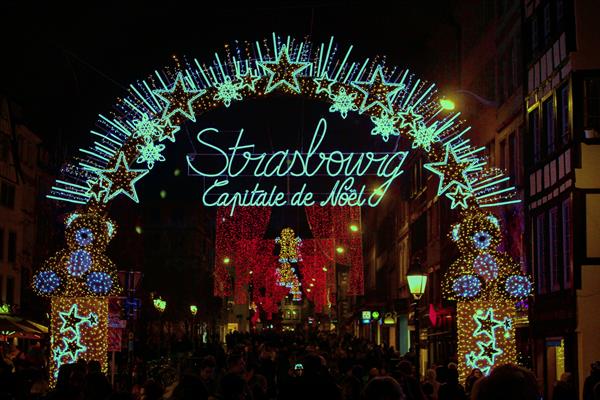
The Name
Alsatian or Elsässerditsch (Alsatian German) is the local language, spoken mostly be old people, villagers, and hipsters. Since Alsace has switched between French and German control five times since 1681, the Alsatian language has survived (I’ve heard Alsace be called the ‘French Texas,’ they’re a little different than the rest of France). Alsatian is actually spoken a bit in the United States within the Swiss-Amish community (It’s not exactly Pennsylvania Dutch, but it’s close). There are apparently 7,000 Alsatian speakers in Allen County, Indiana (According to Wikipedia, take that as you will). Christkindelsmärik is Christmas Market in Alsatian. In German it’s Christkindlmarkt, the similarity is fairly obvious.
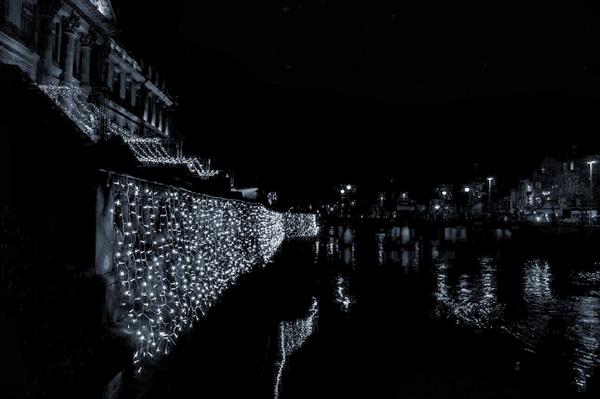
Places
The market takes up pretty much any space possible within the Grande Île. The entire island (Strasbourg’s centre ville is on an island surrounded by canals) is a UNESCO World Heritage Site; including sites such as the Cathédrale Notre-Dame de Strasbourg (built in 1176 and was the tallest building in the world for a while), Maison Kammerzell (Built in 1427 and renovated in 1589), la Petite France (historic neighbourhood, if you look up a picture of Strasbourg, there’s about a 99% chance that, if not the Cathedral, it’s Petite France), etc. The market mainly takes place in Place Broglie (site of the National Opera), Place de la Cathédrale, Place Kléber (Main square in Strasbourg, with a Galeries Lafayette and the only Starbucks in Alsace [Which has been PACKED with tourists for a month...]), and all throughout Petite France.
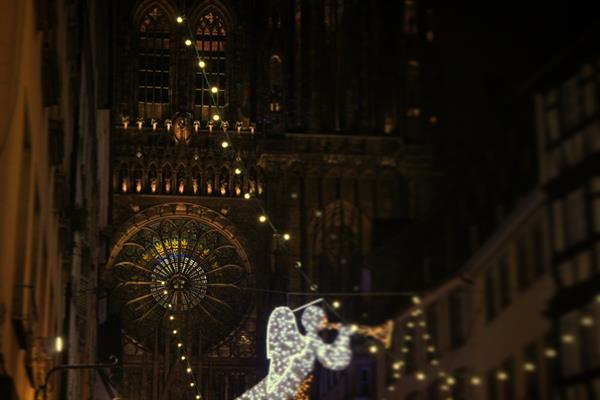
Security
Since the market is held on the island, every bridge onto it has security checkpoints and all of the tram stations on the island are closed until Christmas. You can walk from one end of the city to the other in less than an hour, this part’s not a big deal. Since France is still under a ‘State of Emergency,’ there have been soldiers patrolling the streets since I arrived in September, but now there are 5 or 6 different forms of police and additional private security workers, which I’m sure must be a jurisdictional nightmare for them. According to CNN (via my Grandmother), Strasbourg’s Christmas market was supposedly one of two main terrorist attack targets this holiday season; the other was the Macy’s Day Parade.
In the wake of what happened in the Berlin Christmas market on 18 December (which is believed to be a terrorist attack at the time of writing this piece), the French Minister of the Interior was quoted to have compared the excellent security in Strasbourg to that in Berlin. In November, seven arrests were made in Strasbourg and Marseille for planning terrorist attacks in France (New York Times article HERE). The market is apparently much smaller this year as compared to other years because of this; there was even talk of it being cancelled this year! It’s hard to imagine what the market would be like on a busy year, there’s already no space as it is now!
FOOD
Alsatian food tends to be a mix between French and German food. One of my professors told us a joke that Alsatians tell:
French food is good, but there’s not a lot of it.
German food isn’t good, but there’s always a lot of it.
Alsatian food is good and there’s always a lot of it.
The Strasbourg Christmas Market is the best opportunity for Alsatians to share their culture, especially through their food. As I’ve been reminded by half the Strasbourgeois I’ve spoken to, it’s ‘Not as good as their grandmothers’,’ but when is streetfood ever? Anyways, the market is full of great Franco-Germanic-Alsatian food! Though the Vin Chaud (Hot spiced wine) usually overshadows the rest, there’s flambées (Tarte flambée/flàmmeküeche/flammkuchen [#FunWithTrilingualism] on a baguette [like a pizza/fajitas/ambiguous open-faced tortilla-esque thing]), Spätzle, Pretzels, all the chocolate one could want, Cords Américains (A candy rope thing, I don’t see what makes it American, but whatever), and a whole section of Portuguese food in an area that features a different country each year!
Knickknacks, Paddy Whacks, Trinkets, and Doodads
Though most things in the market now come from China, the Market is a great opportunity for local artists and artisans to showcase their products. Half of Place Broglie is Christmas ornaments, lights, and pieces of art. By Temple Neuf (I add all the place names half for the people who’ve been to Strasbourg, but not the market, and half because I know my dad has Google Maps open in another tab right now) there are various artists and some of the finer chocolatiers. During the non-Christmas season, Place Broglie and maybe others I don’t know host art markets, some of these artists run stands in the market. I’ve been told that the market isn’t as good as the ‘good ol’ days’ when it comes to such knickknacks, paddy whacks, trinkets, and doodads, but it’s still great.
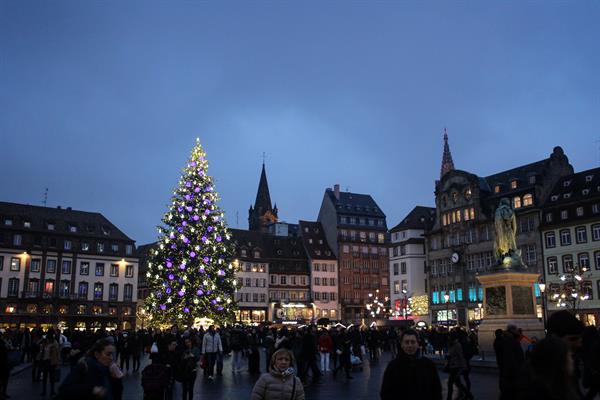
Hot Wine | Vin Chaud | Glühwein
I’ve saved the most well-known for last: Vin chaud in Alsace is generally made with Riesling wine (in the Spring, when I know more, I’ll try to write about Alsatian wines) and spices. Though just about everyone claims that ‘their grandmother’s is better,’ vin chaud (glühwein, hot wine, fun, eh?) is primarily made with cinnamon (sticks, of course), cloves, star anise, citrus, sugar, and sometimes vanilla. One can find different variants of this in the market, which all cost more than the usual 2,50€, so I haven’t tried any of these ones… Hot wine is sometimes made as well with red wine, which is sacrilegious to some, but tastes just fine. According to the all-knowing Wikipedia, glühwein is also often made with blueberry wine and cherry wine, though more so in Germany, I haven’t seen any of these in the market, sadly. The market also has hot orange juice with basically the same spices and honey added. (I’d admit that the orange juice is just as good as or better than the hot wine, but I’d get scolded by at least 5 people, so I’ll refrain from that.)
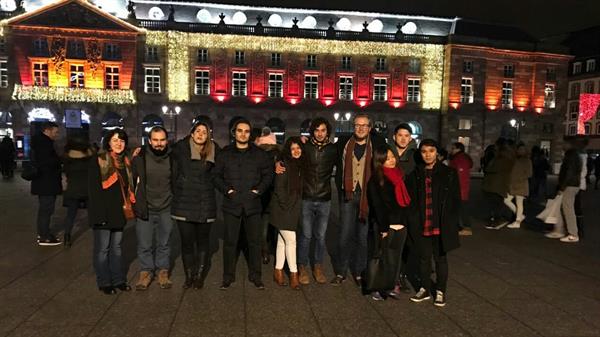
Overall, the market is a great opportunity to experience Alsatian, French, and German culture, get something to eat, enjoy the lights, or go for a walk with friends. There’s always something new one could find; in amongst the Chinese plastic stuff, there are some real gems. It’s truly one of the best things Strasbourg has to offer.

Zander E. Willoughby ’18 is a Political Science & French major & Peace Studies minor, and a former Multicultural Affairs Programmer, Student Senate Vice-President, Model U.N. Secretary-General and more. He is currently studying in Strasbourg, France at the Institut d'Études Politiques at Université de Strasbourg. His future plans include working in International Relations or International Law, hopefully within the U.N. system.